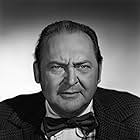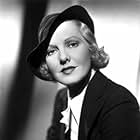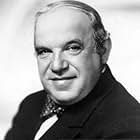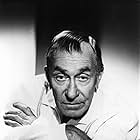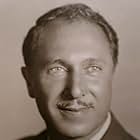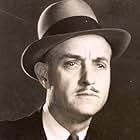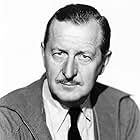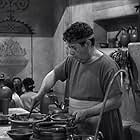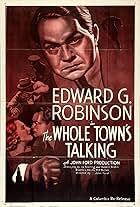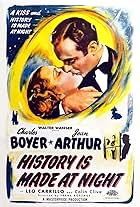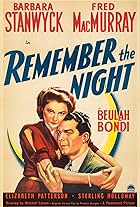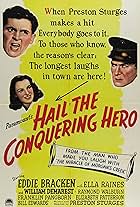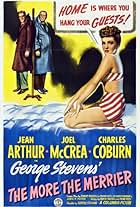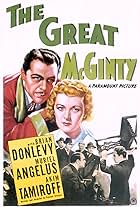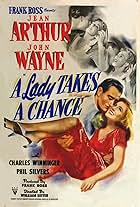The story of legendary gambler Diamond Jim Brady and his romance with entertainer Lillian Russell.The story of legendary gambler Diamond Jim Brady and his romance with entertainer Lillian Russell.The story of legendary gambler Diamond Jim Brady and his romance with entertainer Lillian Russell.
Stanley Andrews
- Gambler
- (uncredited)
Storyline
Did you know
- TriviaAlthough the real Diamond Jim Brady died in 1917, almost 20 years before this film was made, Edward Arnold, who played him, met Brady twice when he was a young actor just starting out in the theater - once when Brady came to pick up an actress who was in the same play as Arnold, and another time when he was in Ethel Barrymore's acting company and Brady came backstage to pay his respects to her.
- GoofsAfter we are informed the action has shifted to 1886, we see a montage of telegrams dated 1883.
- Quotes
Pawnbroker: What you need is a diamond.
Diamond Jim Brady: What for?
Pawnbroker: Well, to make money, you gotta look like money.
Featured review
"Diamond Jim" is a very good bio-pic about a very big man - big in more ways than one. James Buchanan Brady (1856-1917) became known as Diamond Jim Brady for his flair of wearing, buying and bestowing expensive jewelry, especially diamonds. Brady was big in size, weighing over 300 pounds. The claims about how much and what he ate for dinner are probably more myth than fact; but, he loved to eat and his typical meal would be the equivalent of what six or more people would eat. After his death at age 60 and an autopsy, doctors said that Brady's stomach with six times larger than a normal stomach.
Much of this film is centered around Brady's love for food and eating habits. Several scenes are at dinner tables when he was alone or with others. The film is based on the 1934 biographical novel of the same title, by author Parker Morell (1906-1943). Although some of Brady's early successes in business had some shady overtones, Brady was highly regarded for his achievements and his generosity. He had a big heart and cared about others - even making friends out of former enemies or opponents. And, he was a philanthropist. Brady's worth when he died in 1917 is estimated at $1.5 million which would be close to $45 million in 2022. Among his charitable support was a $220,000 donation ($6.5 million in 2022 dollars) to Baltimore's Johns Hopkins Hospital.
The film is mostly about his adult life when he became a great salesman and then entrepreneur and supporter of new businesses. He concentrated on railroads, the equipment they needed, and eventually the production of steel rail cars to replace the wooden ones that had been in use.
This appears to be a fairly accurate and thorough picture of Brady, at least as can be portrayed in less than 90 minutes. One of the other things Brady was also otherwise known for was his friendship with the famous American singer and performer, Lillian Russell. That gets good treatment in this film.
The acting is very good with a fine cast of actors of the time. Edward Arnold is superior as Diamond Jim Brady. Binnie Barnes is very good as Lillian Russell. And Eric Blore is very good and humorous as the English businessman, Sampson Fox. Some of the other supporting cast are very good. The only roles that seem sort of lackluster are those played by Jean Arthur as Jane Matthews and Cesar Romero as Jerry Richardson.
My favorite bit of dialog in the film is the lines that portray when and how Brady got the moniker, Diamond Jim. Pawnbroker, "What you need is a diamond." Jim Brady, "What for?" Pawnbroker, "Well, to make money, you gotta look like money."
Much of this film is centered around Brady's love for food and eating habits. Several scenes are at dinner tables when he was alone or with others. The film is based on the 1934 biographical novel of the same title, by author Parker Morell (1906-1943). Although some of Brady's early successes in business had some shady overtones, Brady was highly regarded for his achievements and his generosity. He had a big heart and cared about others - even making friends out of former enemies or opponents. And, he was a philanthropist. Brady's worth when he died in 1917 is estimated at $1.5 million which would be close to $45 million in 2022. Among his charitable support was a $220,000 donation ($6.5 million in 2022 dollars) to Baltimore's Johns Hopkins Hospital.
The film is mostly about his adult life when he became a great salesman and then entrepreneur and supporter of new businesses. He concentrated on railroads, the equipment they needed, and eventually the production of steel rail cars to replace the wooden ones that had been in use.
This appears to be a fairly accurate and thorough picture of Brady, at least as can be portrayed in less than 90 minutes. One of the other things Brady was also otherwise known for was his friendship with the famous American singer and performer, Lillian Russell. That gets good treatment in this film.
The acting is very good with a fine cast of actors of the time. Edward Arnold is superior as Diamond Jim Brady. Binnie Barnes is very good as Lillian Russell. And Eric Blore is very good and humorous as the English businessman, Sampson Fox. Some of the other supporting cast are very good. The only roles that seem sort of lackluster are those played by Jean Arthur as Jane Matthews and Cesar Romero as Jerry Richardson.
My favorite bit of dialog in the film is the lines that portray when and how Brady got the moniker, Diamond Jim. Pawnbroker, "What you need is a diamond." Jim Brady, "What for?" Pawnbroker, "Well, to make money, you gotta look like money."
Details
- Runtime1 hour 28 minutes
- Color
- Aspect ratio
- 1.37 : 1
Contribute to this page
Suggest an edit or add missing content









